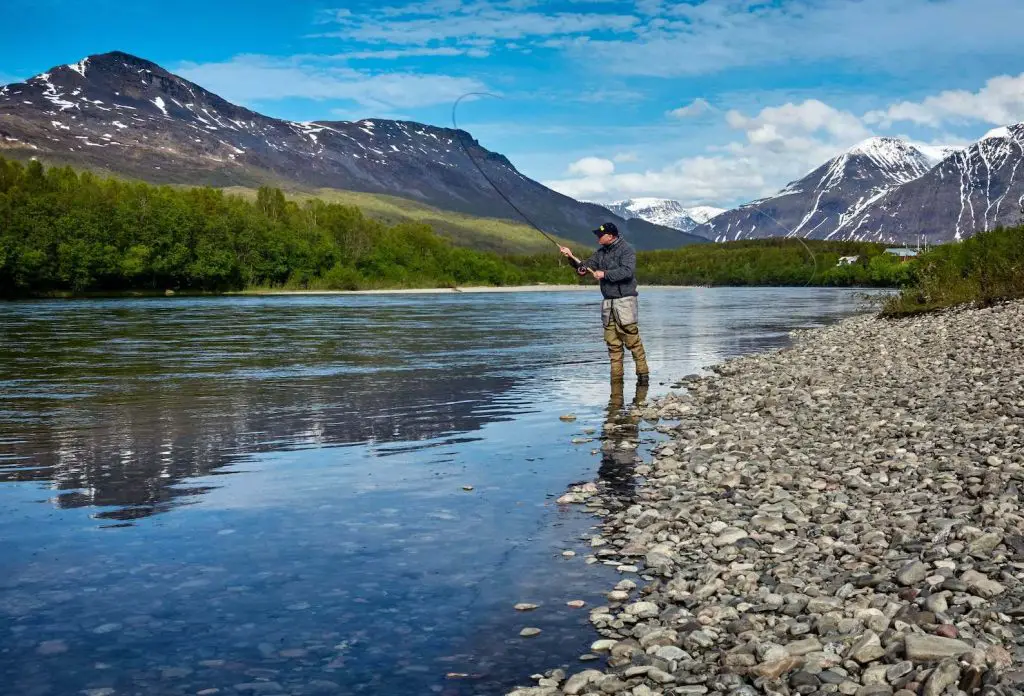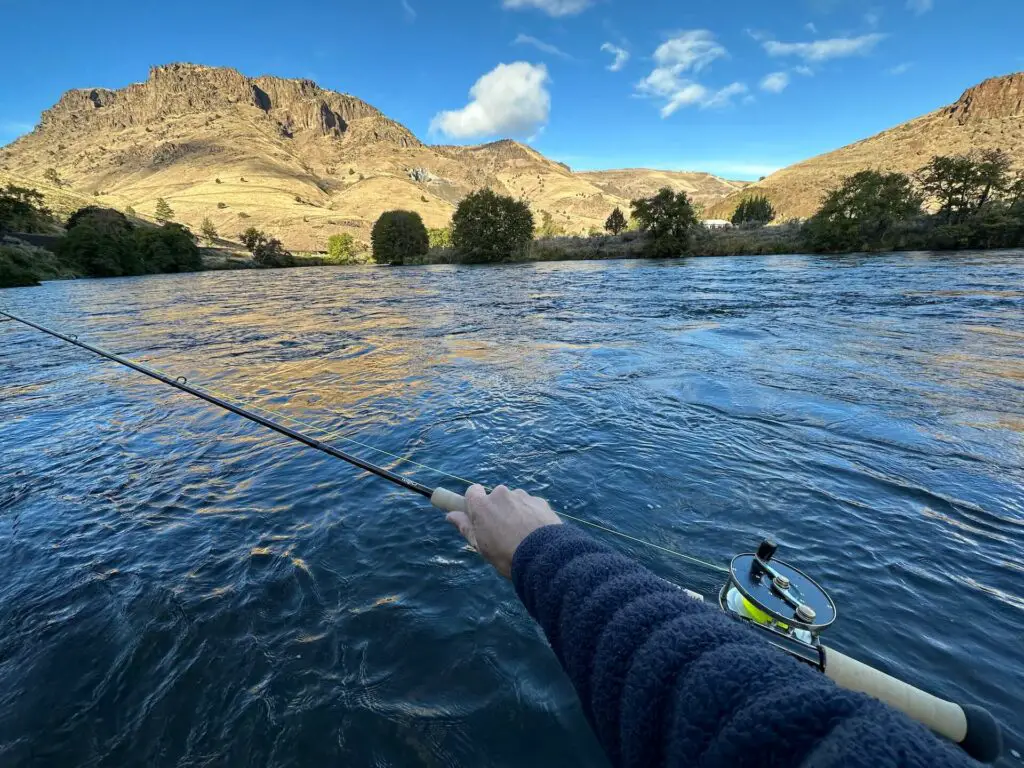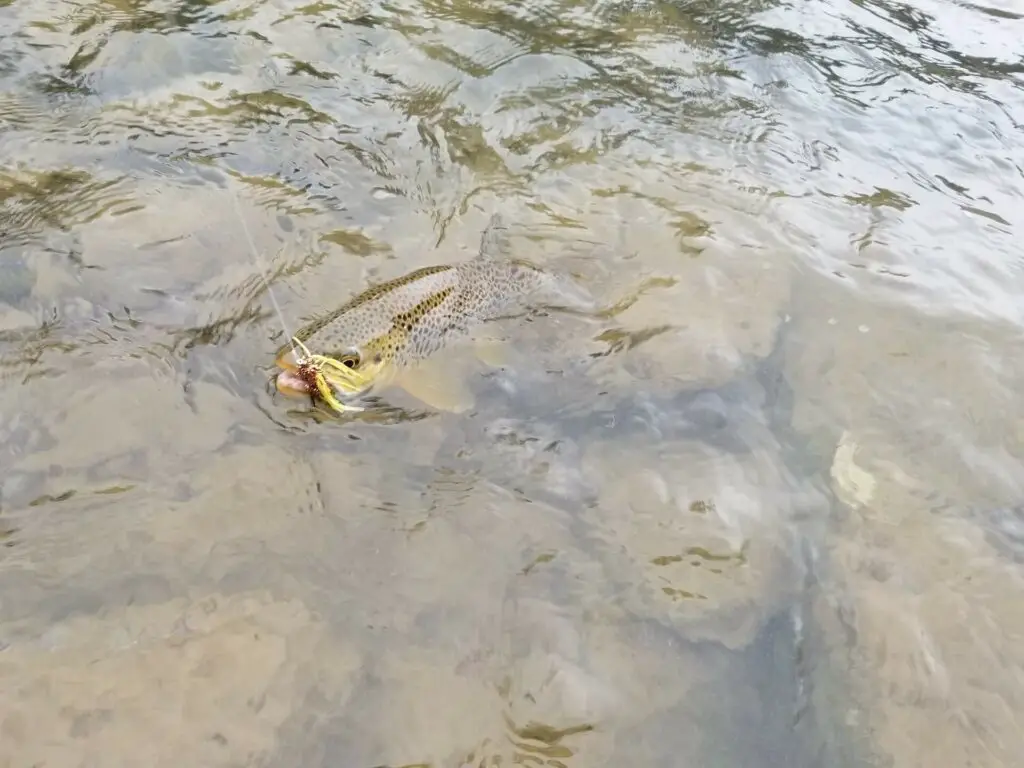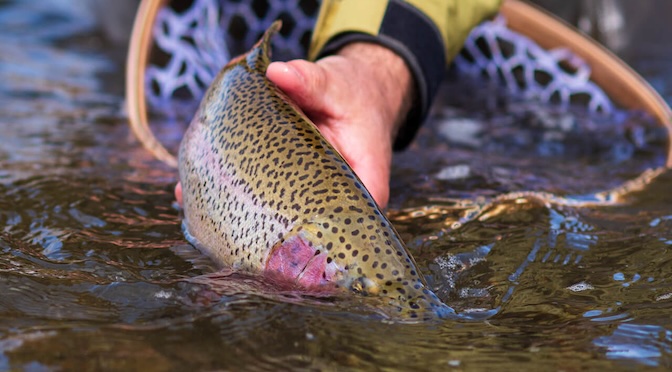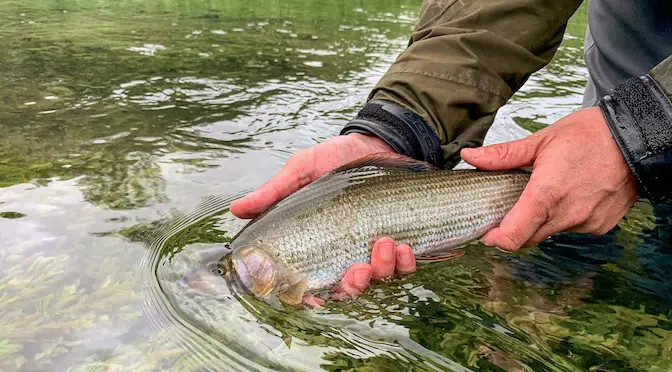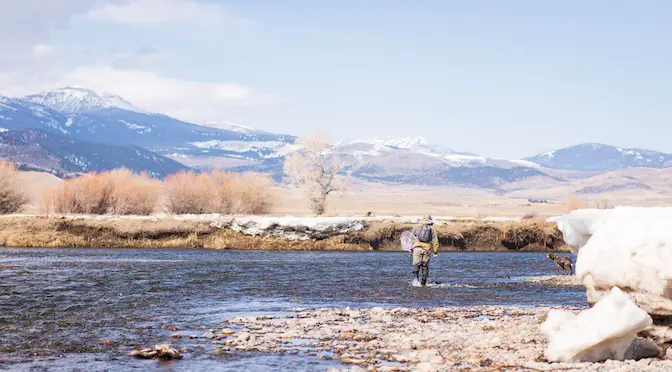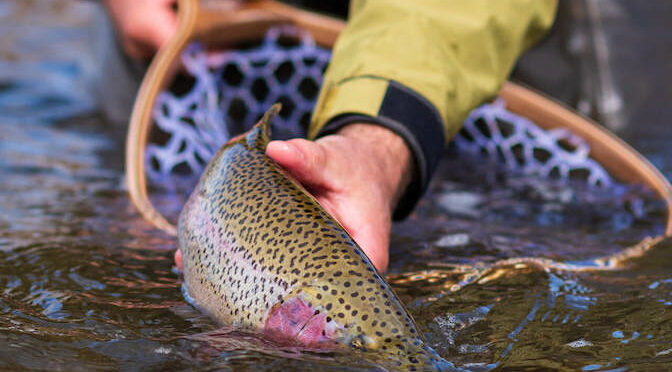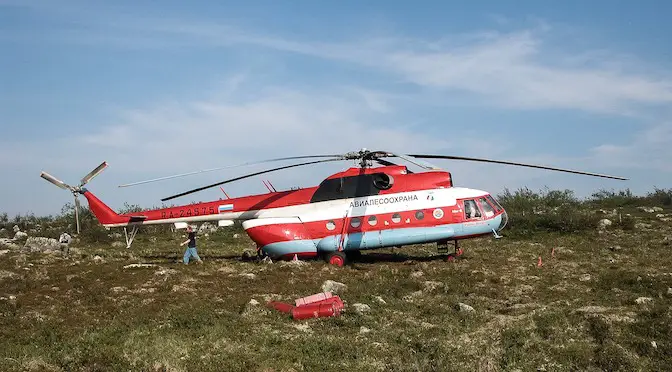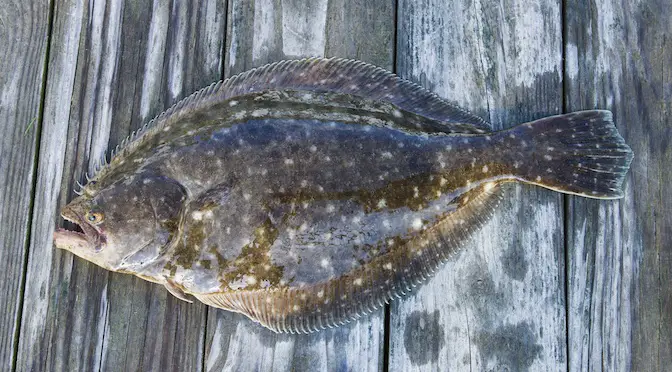- Wading Wisdom #13 – Simon Gawesworth - July 7, 2025
- On the Water with the Korkers Bantam Lite - June 26, 2025
- How to Find Trout in Rivers & Streams Anywhere - June 13, 2025
Trout are probably the most popular species in fly fishing.
When you start out fly fishing, chances are high, you’ll be targeting trout. That is because many rivers in the Northern and Southern hemisphere are home to this species. Brown trout are abundant all across Europe and the United States. And then think about the monster trout down in New Zealand and sea run browns in Patagonia, Argentina.
One of the great things about trout is that you can target them with a fly rod in many different ways. A lot of you will think of delicate dry fly presentations where you see the fish take your fly. Or euro nymphing, a nymphing techniques that originated in Central Europe and has since become very popular since it has proven to be very successful. The drift of the nymphs in that fishing style is so-real life that often (big) trout simply cannot resist.
Then there is another technique that is gaining more and more fans amongst trout fishermen for its relaxed, laid back style of casting: trout spey. As the name suggests, this style is like the little brother of traditional spey casting that originated in the Spey region of Scotland where fly fishermen used to target Atlantic salmon with big double handed rods and so-called spey casts. Spey casts are waterborn casts (you don’t lift the fly line off and out of the water) that often come in handy when you’re wading a river with a high bank in your back or overhanging vegetation. That’s when spey casts come into play where you form a D-loop on your left or right sight and the let the line shoot across the river to fish a swing (also used in steelhead fishing).
There is even single hand spey casting nowadays in which lines such as the Rio Single hand spey are used, enabling you to perform a spey style cast with a single hand rod. In this article I want to give you an overview of what this spey fishing is all about.
The Technique Explained
The Basics
So, trout spey fishing is essentially a two-handed casting technique using longer rods (around 10-12 feet). Think of it as a way to cover more water efficiently. Instead of the traditional single-handed cast, you’ve got these longer rods that let you do what’s called spey casting – it’s a bit like a fluid, rhythmic dance.
Rod and Reel Setup
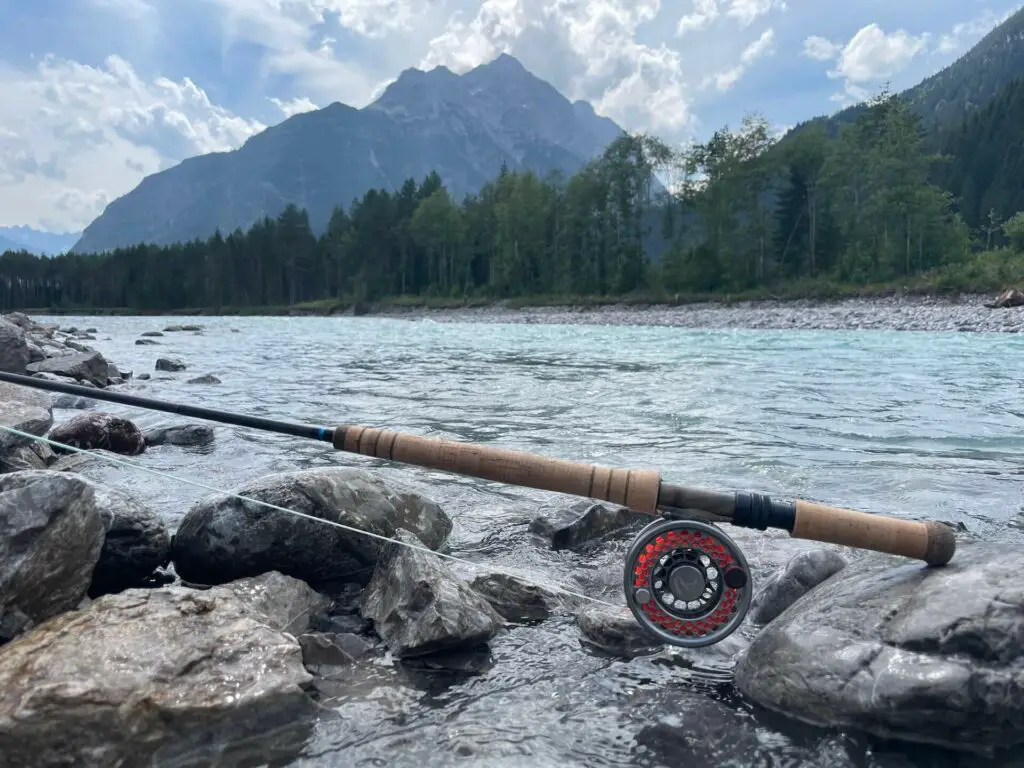
Gear-wise, you’ll need a rod with a light to moderate action (usually in the 3, 4 and 5 weight range). The lines you use are a bit different too – integrated Scandi or Skagit lines are the go-to. Reel-wise, just make sure it’s got a smooth drag to handle those trout that like to put up a bit of a fight.
Flies You Can Use
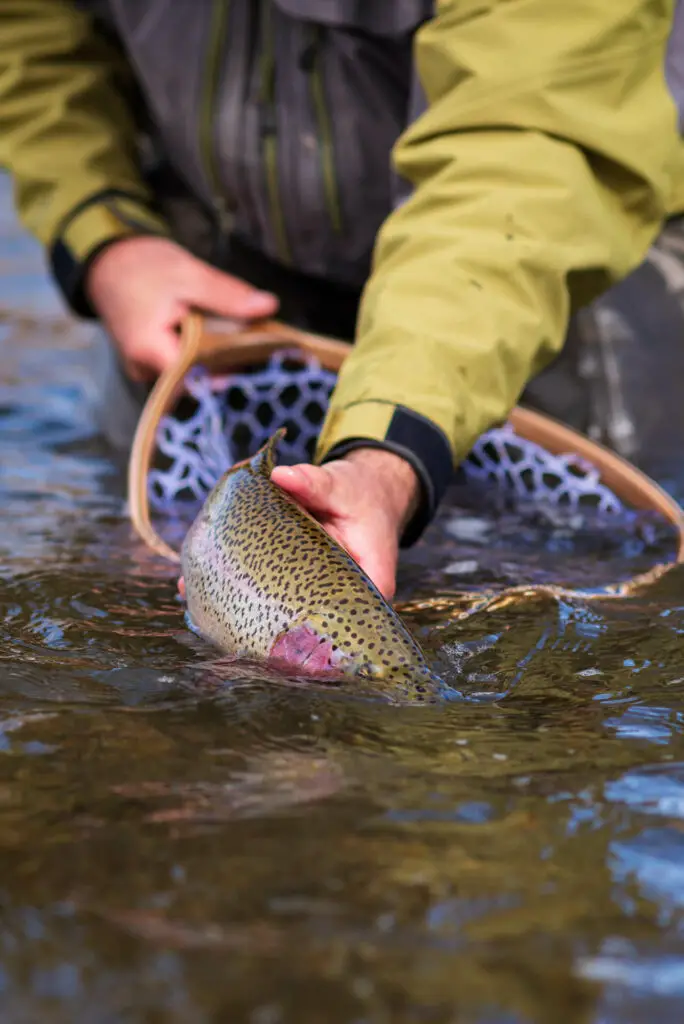
Now, about the flies – you can use your regular streamers or wet flies. I’d say these are the two most common types of flies used. If you’re a traditionalist you can also opt for a classic spey fly. Alternatively I’ve had good success with intruder flies (often used in steelhead fishing). Technically, you could even swing a big dry fly or a nymph. You can tell the possibilites are endless but as a rule of thumb I’d say streamer and wet flies are the way to go.
What Sets Trout Spey Apart
How does it compare to regular dry fly fishing or nymphing? Well, with spey fishing, you’re covering more ground with each cast. It’s not as precise as nymphing, but it’s got this smooth, rhythmic feel that’s different from the gentle ballet of dry fly fishing.
Situations in which this Technique is Superior
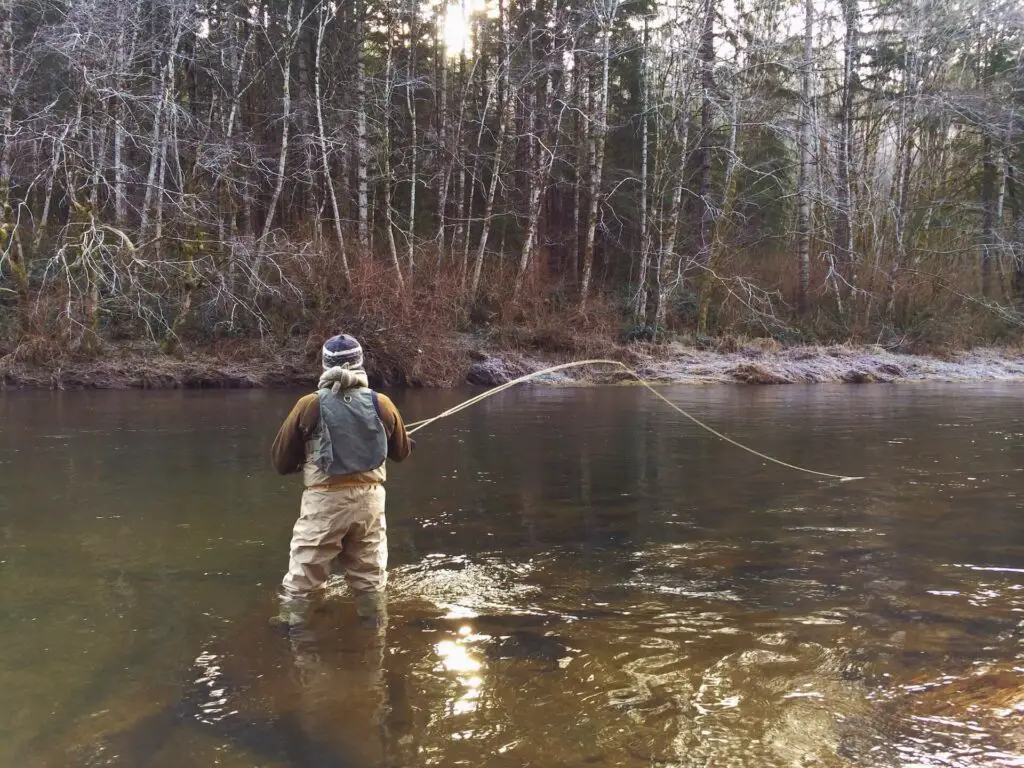
Covering Large Water
You’re fishing on a larger river or a wide section where covering extensive water is crucial. The longer two-handed rods used in trout spey allow you to make longer casts, covering more water efficiently. This is advantageous when targeting trout in larger river systems or expansive stretches where a single-handed rod might fall short.
Efficient Streamer Fishing
You’re targeting aggressive trout using streamers in larger rivers. This technique excels at streamer fishing due to its ability to deliver larger flies with ease. The two-handed casting technique facilitates a dynamic swing, mimicking the movement of baitfish and enticing predatory trout in a way that can be challenging with a single-handed rod.
Swinging Flies in Currents
You want to swing flies through various currents to entice trout. Spey casting allows for a rhythmic swing of flies across different water currents. This technique is highly effective when targeting trout holding in different parts of the river, providing a natural presentation that triggers strikes.
Adapting to Changing Conditions
Conditions on the water are variable, and you need to adapt quickly. The versatility of this fishing style allows anglers to adapt to changing conditions with ease. Whether you need to switch from swinging flies to nymphing or adjust your casting distance, the two-handed rod provides flexibility for a range of fishing scenarios.
Minimal Backcasting Room
You’re fishing in areas with limited backcasting room, such as tight riverbanks or overhanging vegetation. Spey casting requires less room for backcasting compared to traditional fly casting. This is advantageous when fishing in confined spaces, allowing anglers to effectively present their flies in areas where a single-handed rod might struggle.
Reducing Casting Fatigue
You plan on an extended day of fishing, and reducing casting fatigue is a priority. The two-handed casting motion in spey is generally less fatiguing over time compared to the repetitive single-handed casting. This can be beneficial for anglers who plan on extended fishing sessions. From my experience it’s also easier to cast for a long time on windy days using the spey style.
Conclusion
I hope this guide gave you a good first idea of what spey fishing for trout is all about. For me it’s become a constant part of my repertoire because it’s the most effective way to cover a lot of water when fishing for trout in my eyes. Plus, I really enjoyed two handed casting which is such a relaxed and effortless way of fly fishing.
FAQs: Trout Spey Fishing
What makes spey casting different from regular casting?
Spey casting uses longer rods and different casting techniques to cover more water efficiently.
Can I use spey fishing on smaller rivers?
Technically you can. But the advantages of spey fishing for trout (or double-handed fishing in general) really come into play on bigger rivers since the advantage of that technique is to cover more water than you would be able to cover with a single handed rod.
What kind of flies should I use in trout spey fishing?
There is no real limitation in the patterns you can use. You could even try a dry fly if you wanted. However, from my experience, streamers and wet flies work best when fished with a spey setup since these flies are great options to swing a fly and imitate a bait fish under water.
Is it hard for beginners?
Since most fly fishermen start out with a single handed rod, trout spey fishing – which is done with light double-handed rods – is a little different and not self explanatory in the beginning. From my experience it makes sense to become decent at a single hand overhead cast before you give double-handed fishing a try.

